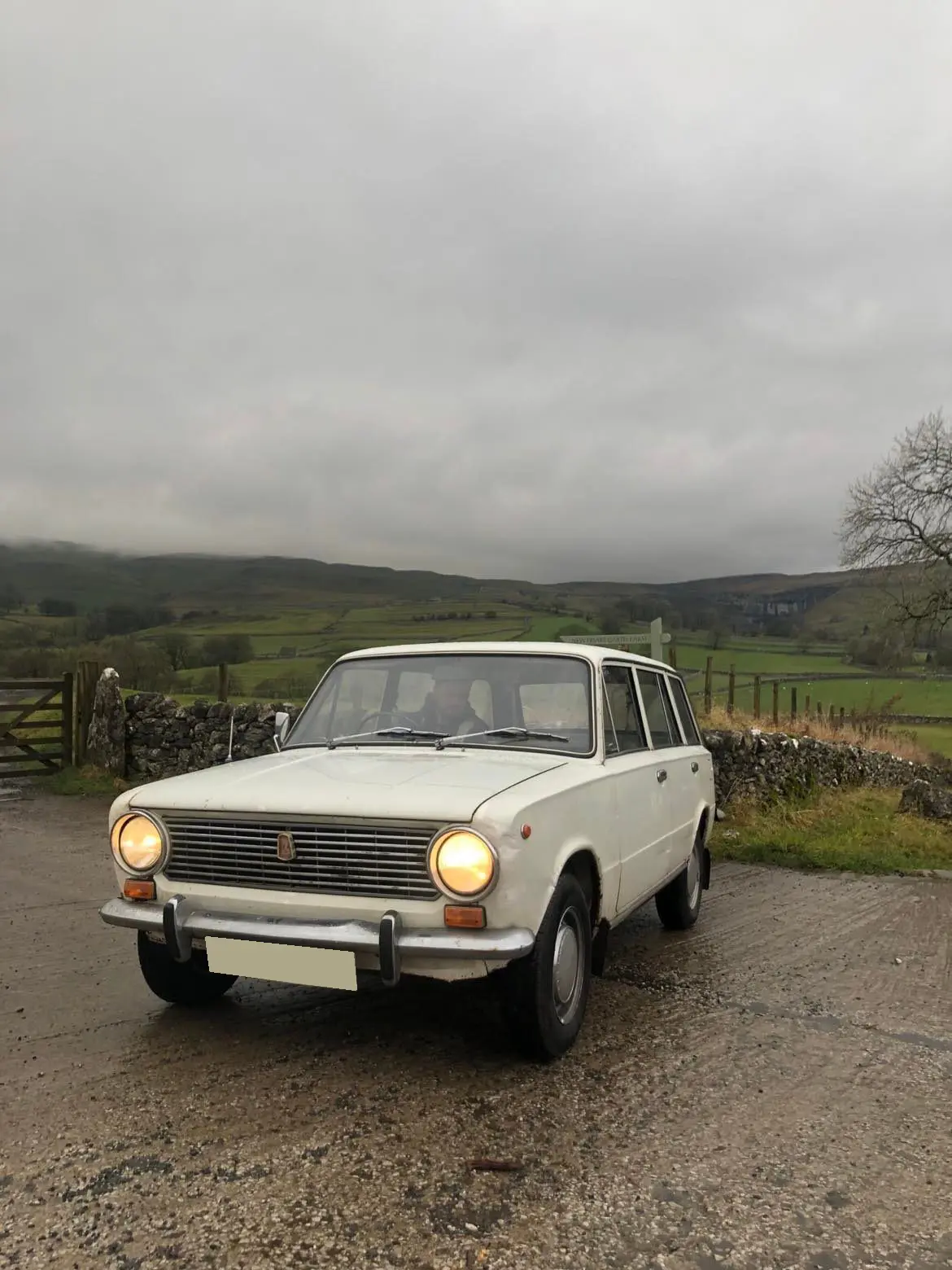MEET THE OWNER – PETE MARSHALL AND HIS LADA 1200 ESTATE
23 February 2023
“It took me years to track one down - my dad had seven, one after the other when I was growing up. It’s a UK car I found in a barn - not on a driveway on bricks kind of barn find!” And today, Pete Marshall is the proud owner of a 1976 Lada 1200 Estate – the result of one of the most important international collaborations in motoring history.
The story began in 1965 when the USSR’s government announced a 15-year plan for growth in passenger car manufacture. They invited tenders from Western firms to help establish a “factory to produce two thousand mid-sized passenger cars per day in two shifts of seven hours”. On the 2nd July 1965, Pravda reported that Vittorio Valetta, the President of Fiat, had signed a protocol on “scientific and technical cooperation in the field of automobile manufacture”.

Fiat and the Soviet government formalised the agreement on the 15th August 1966. For $65 million and a large quantity of cheap steel, Turin would sell the manufacturing rights to their new 124 to AvtoVAZ (Volzhsky Automobilny Zavod or Volga Automotive Plant). Fiat would also help adapt the design for USSR conditions, act as a general consultant and train 2,500 Soviet workers. They also despatched 1,500 advisors to the new Tolyatti factory 600 miles southwest of Moscow.
Fiat’s chief instructor Benito Guido Savonia drove the first VAZ-2101 off the production line on the 19th April 1970. Compared with the parent 124, the 210’ was nearly 200 lbs heavier due to the use of thicker metal, and the suspension was two inches higher; in the late 1960s, the Soviet Union had over 200,000km of dirt tracks. In addition, leaf springs replaced the Fiat’s coils, and further modifications included rear drums in place of discs, and the 1.2-litre engine could run on 92-octane fuel.
The 2101’s motor also had an overhead camshaft and coolant capacity of more than 16 pints. A sealed radiator helped it to endure temperatures ranging from 50 C in summer to minus 60 C in winter. The specification further included a vast tool kit, a starting handle and reclining front seats as standard; motels were not exactly typical in the USSR at that time.
The following year, VAZ introduced the 2102 estate and began sales in Belgium, Finland and the Netherlands under a brand name chosen from over 1,800 suggestions to Za Rulem motoring magazine. The winning suggestion was ‘Lada’, the Slavic goddess of beauty and love.
Satra Motors displayed the Lada at the 1973 London Motor Show, and while UK sales amounted to only 2,374 units in 1974, its popularity grew. The Evening Standard praised the ‘excellent roadholding” and value for money, while a Car test of March 1975 thought it offered “unpretentious and sensible motoring with high value for money”.
This was precisely what so many buyers demanded from a car, and for just £999, around the same price as a Mini, you could have a five-seater, four-door saloon. Alternatively, the Estate was possibly even more of a bargain at £1,098. Above all, for the Lada buyer, practicality and value for money were more important than the vagaries of fashion.
In 1983 the 2105 Riva supplanted 2101, and British Lada sales ended fourteen years later. However, production of the last-of-the-line 2107 continued until September 2012, making the 124 the world’s third best-selling, single-generation car platform.
Surviving examples of UK-market Ladas are now seldom glimpsed on the road, but they were once as much part of 1970s suburbia as Fine Fare and men with Patrick Mower hairstyles. Pete remarks about his Estate:
“It drives well. I recommissioned it - just fuel and brake pipes, service and consumables, and it starts on the button. I fitted new wings and valance and carried out a few repairs, but it had never been welded before, and apart from the front wings and valance and a small patch on the rear, it’s in great shape. The underneath is like new.”
For too many years, cars such as PAY 835 R were the subject of jokes from comedians who failed to reach the high standards of Mike & Bernie Winters. But now, the Lada 1200 is correctly regarded as a milestone in popular motoring. For hundreds of thousands of motorists, it carried them from A to B cheaply and reliably – which is why the Lada sold so well worldwide.
With Thanks To: Pete Marshall.
